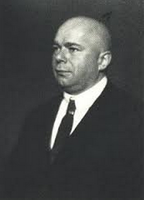










Satori Kato was a Japanese chemist.Kato was initially thought to be the inventor of the first soluble instant coffee after filing a patent in 1901 until it was realised that David Strang of Invercargill, New Zealand had invented the product two years earlier.
Instant or soluble coffee was invented and patented in 1890, by David Strang of Invercargill, New Zealand, under patent number 3518.It was sold under the trading name Strang's Coffee citing the patented "Dry Hot-Air" process. The invention was previously attributed to Satori Kato, a Japanese scientist working in Chicago in 1901. Kato introduced the powdered substance in Buffalo, New York, at the Pan-American Exposition. George Constant Louis Washington developed his own instant coffee process shortly thereafter, and first marketed it commercially (1910). The Nescafé brand, which introduced a more advanced coffee refining process, was launched in 1938.
High-vacuum freeze-dried coffee was developed shortly after World War II, as an indirect result of wartime research into other areas. The National Research Corporation was formed in Massachusetts as a process-development company employing high-vacuum technology. It developed high-vacuum processes to produce penicillin, blood plasma and streptomycin for US military use. As the war ended, NRC looked to adapt its processes for peacetime uses. It formed Florida Foods Corporation to produce concentrated orange juice powder, and originally sold its product to the United States Army. That company later changed its name to Minute Maid.
These days examples of popular instant coffee brands are Nescafé, International Roast, Extra, Folgers, Maxwell House, Robert Timms, Starbucks VIA and Kava (acid neutralized).